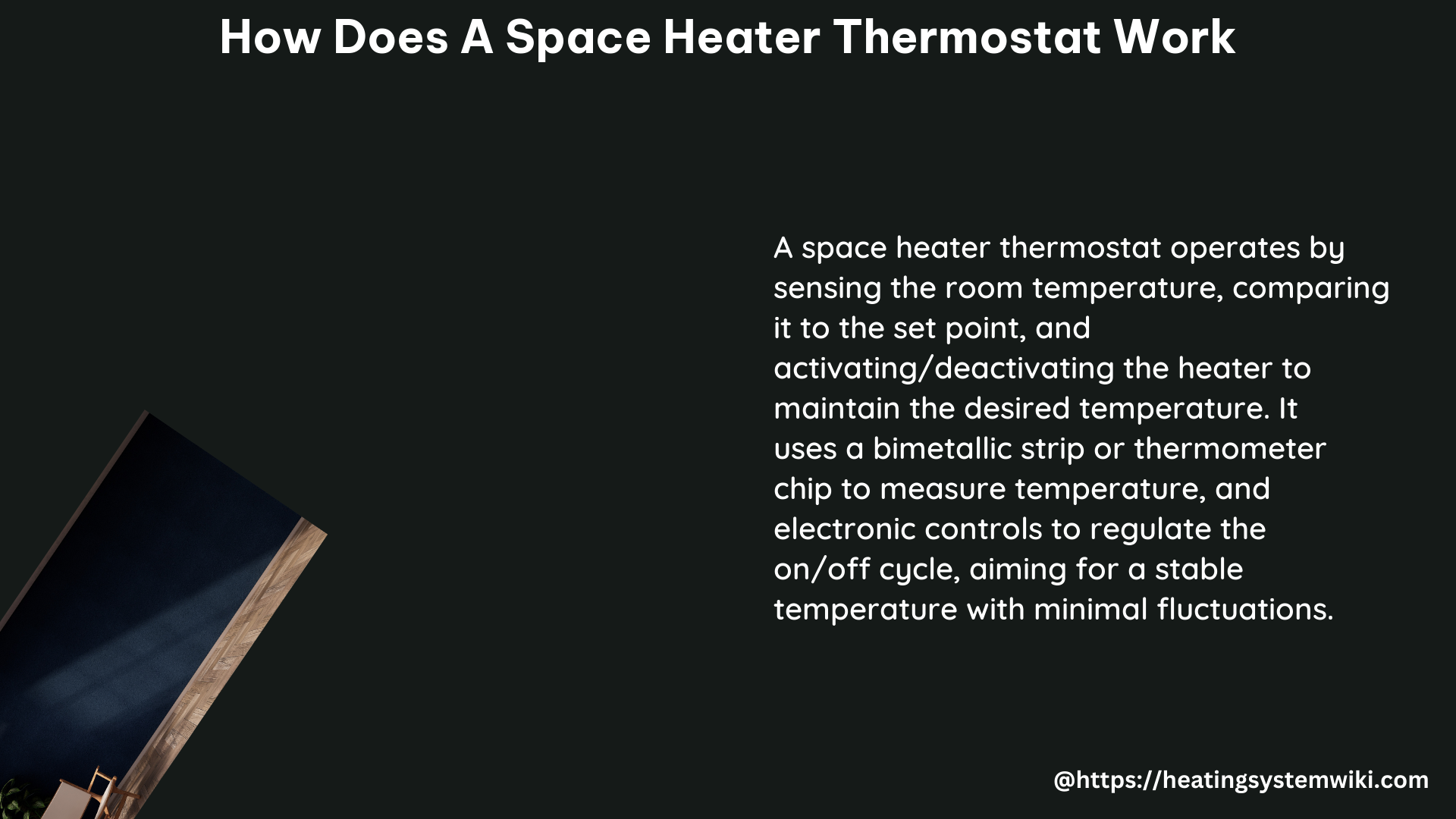A space heater thermostat is a crucial component that controls the temperature of a space heater by turning it on and off based on the desired room temperature. It works by continuously monitoring the ambient temperature and adjusting the heater’s output to maintain the user-set temperature. This article delves into the technical details of how a space heater thermostat functions, providing a comprehensive understanding for DIY enthusiasts and homeowners.
Understanding the Bimetallic Strip Mechanism
The most common type of space heater thermostat utilizes a bimetallic strip to sense and regulate the temperature. This strip is composed of two different metals, such as brass and steel, bonded together. As the temperature changes, the metals expand and contract at different rates, causing the bimetallic strip to bend or flex.
- When the room temperature drops below the set point, the bimetallic strip bends, closing an electrical circuit that activates the heater.
- As the room warms up and reaches the set temperature, the bimetallic strip straightens, opening the circuit and turning the heater off.
- The thickness of the bimetallic strip, the metals used, and the bonding process all contribute to the thermostat’s sensitivity and accuracy.
Thermistor-Based Thermostat Design

An alternative to the bimetallic strip is the thermistor-based thermostat. This design utilizes a temperature-sensitive resistor, known as a thermistor, to measure the room temperature.
- The thermistor’s resistance changes in response to temperature variations, typically decreasing as the temperature rises.
- This resistance change is converted into a voltage signal, which is then used to control the heater’s operation.
- Thermistor-based thermostats offer more precise temperature control and faster response times compared to bimetallic strip designs.
- They also have the advantage of being more compact and less susceptible to mechanical wear and tear.
Adjusting the Thermostat Settings
Space heater thermostats typically feature user-friendly controls to adjust the desired temperature and other settings.
- Knobs or buttons on the thermostat allow users to set the target room temperature, usually within a range of 40°F to 90°F (4°C to 32°C).
- Some thermostats also include a dial or switch to control the heater’s heat output, enabling users to fine-tune the warmth level.
- It’s important to note that the fan speed of the heater can also affect the temperature control, as a faster fan will heat the room more quickly but may also cause greater temperature fluctuations.
Understanding Hysteresis and Its Implications
Hysteresis is a crucial concept in understanding how a space heater thermostat operates. Hysteresis refers to the difference between the temperature at which the thermostat turns the heater on and the temperature at which it turns the heater off.
- A smaller hysteresis value will cause the thermostat to cycle the heater more frequently, maintaining a more consistent temperature.
- However, reducing the hysteresis too much can lead to the heater turning on and off excessively, potentially causing increased energy consumption and wear on the components.
- Manufacturers typically design the hysteresis to strike a balance between temperature stability and energy efficiency, but users may be able to adjust this setting to suit their preferences.
Troubleshooting and Maintenance
To ensure the optimal performance and longevity of your space heater thermostat, it’s essential to perform regular maintenance and troubleshoot any issues that may arise.
- Check the thermostat’s connections and wiring for any signs of damage or loose connections, which can affect its functionality.
- Clean the thermostat’s sensors (bimetallic strip or thermistor) to remove any dust or debris that may interfere with accurate temperature readings.
- Verify that the thermostat is calibrated correctly by comparing its readings to a reliable thermometer and adjusting the settings as needed.
- If the thermostat is not functioning as expected, consult the manufacturer’s troubleshooting guide or seek the assistance of a qualified technician.
By understanding the inner workings of a space heater thermostat, you can ensure that your heating system operates efficiently, maintains a comfortable temperature, and provides reliable performance for years to come.
